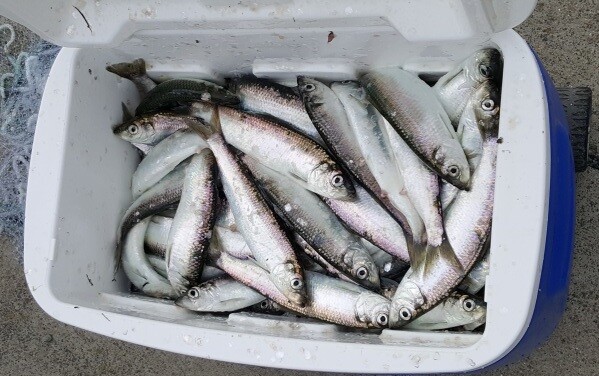Last year’s herring season didn’t happen for San Francisco gillnetters, but biomass estimates have swung toward the positive, and the industry is hopeful for a fishery in January.
Dismal biomass estimates put the last two seasons on hold. That and waning interest in salted herring roe skeins in Japan have left the fleet operating at a fraction of what it was in the heyday era of the ’80s and early ’90s.
The commercial fishery began in 1973, and a formal limited entry permit system was implemented in 1977. Through the years the fishing quota has been split between even-and-odd numbered permits which were designated as “platoons.” Though the participating vessels in the early years numbered in the hundreds the fleet has dwindled to dozens, based on lack of interest and a buyback program. As of the 2019-20 season, there were 25 even platoons and 17 odd-numbered platoons.
Last year fishery managers and the industry did away with the platoon system altogether, and a new program provides permanent limited entry permits which will allow holders to fish two, 55-fathom nets in the San Francisco fishery, from Mondays through Fridays while other holders were issued transitional permits which allow for the operation of a single net in the fishery during the same days.
The transitional permits may be combined for a total of two nets for the fishery, but in time those permits will be phased out, according to Tom Greiner, environmental scientist with the California Department of Fish and Wildlife in Santa Rosa.
“As of 2025, there will be no more transitional permits,” he says.
As for quotas, they’ve been set as high as 10,399 tons since 1973, when the fishery began, and have fluctuated wildly through the years. Since the 2013-14 season, however, quotas have seen a precipitous decline.
The combination of spawning surveys and other stock assessment information warranted reopening the fishery on New Year’s Day of 2022.
“This year, we’re going to have a 750-ton quota,” says Griener.
Though prices have been depressed along the West Coast and in Alaska, seiners in the far west herring grounds of Togiak had been fishing for $50 per ton in recent years, but received $100 per ton for their catch in the ’20 and ’21 seasons.







